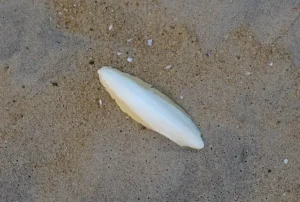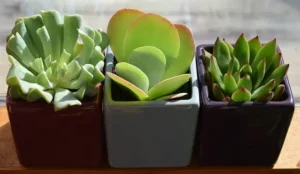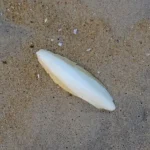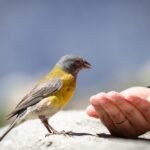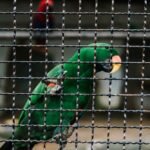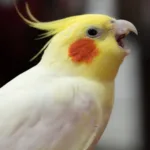Crossbreeding is a common practice among pet breeders and is used to produce new hybrid species. However, it is a lot less common to see hybrid parrot species than mixed breeds of other pets. So why is that? Is it because parrots are just harder to breed?
This is because all parrots are not the same species. Even though parrots share similarities and characteristics like a curved beak and bright feathers, most of the species are not genetically closely related.
It is possible for parrots to crossbreed if they belong to the same genus. Close genetic relations among parrots can mean compatibility for breeding, although it is not always guaranteed.
Quick Navigation
What Parrots Can Crossbreed?
Parrots can crossbreed with another parrot only if it is in the same genus. In some cases, parrots can also cross-breed with other parrots from the same family, but that is rare.
For example, a scarlet macaw and a green-winged macaw can be cross-bred because both of them are a member of the same genus Ara.
However, A macaw, which belongs to the genus Ara cannot breed with a lovebird, which belongs to the genus Agapornis.
Biological Classification Of Parrots
Animals including birds are organized into biological classifications in a hierarchical order. This structure includes several levels, each with its own specific characteristics. All animals are classified in the following biological structure:
- Domain
- Kingdom
- Phylum
- Class
- Order
- Family
- Subfamily
- Genus
- Species
Order
Orders are broader groups that contain multiple families with similar characteristics. Parrots are part of the order Psittaciformes, which includes all types of parrots from cockatoos, lorikeets, and other species.
Family
Family is the third level of classification, below order, and groups parrots from different genera that share common characteristics. Parrots are divided into four families:
- Psittaculidae: Old World parrots
- Psittacidae: New World parrots
- Cacatuoidea: Cockatoos
- Strigopidae: New Zealand parrots
Genus
A genus is a group of closely related species. Parrots of the same genus are more similar to one another than species from different genera. Within the four broad families of parrots, there are approximately 101 genera.
Species
A species is defined as a group of organisms that can breed and produce fertile offspring. This is the most basic level of classification.
Popular Hybrid Parrot Species
Hybrid parrots are not found in nature. They are created in captivity by interbreeding different species of parrots. There are many species of parrots that are visually distinct from each other but share close genetic similarities, resulting in the birth of a new species that has both of their characteristics. Hybrid parrots are not very popular as pets and are quite rare. However, they are certainly fascinating and sought after by parrot enthusiasts.
Ruby Macaw
The Ruby Macaw is a hybrid macaw species produced by cross-breeding scarlet macaw and green-winged macaw. This new species looks very similar to its two parent species.
Green-winged macaws are often confused with scarlet macaws because they look so similar. The only difference between the two is the color of the upper wing coverts. Green-winged macaws have mostly green upper wing coverts, while scarlet macaws have yellow.
Catalina Macaw
Catalina Macaw is another common hybrid macaw species that is quite famous among bird enthusiasts. The Catalina Macaw is a first-generation hybrid between a Blue and Gold Macaw and a Scarlet Macaw.
It inherits its colors from both parent species. Catalina macaw has deep orange and red chests and bellies and a greenish crown. Its back and wings are shades of green and blue.
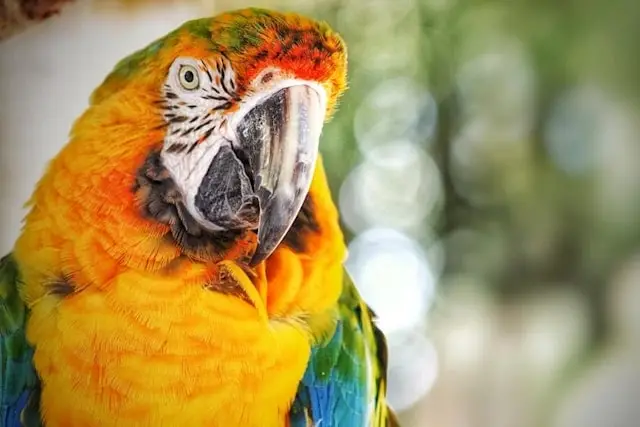
Harlequin Macaw
The harlequin macaw is a mix of the blue and gold macaw and the green-winged macaw and is rarely seen in captivity. It has a beautiful plumage borrowing colors from its parent species. It has olive green and blue wings with orange undersides.
Camelot Macaw
Camelot Macaw is a second-generation hybrid resulting from the crossbreeding of a Scarlet Macaw and a Catalina Macaw.
Buffwing Macaw
The buffwing macaw is the result of interbreeding Buffon’s macaw and Green-winged macaw.
Nansun Conure
The name Nansun conure is apt and gives away the origin of the species. This species is created by the interbreeding of Nanday conure and Sun conure.
It takes characteristics from both species and has a distinct look. Nansun conure has a predominantly green plumage, but it also has shades of yellow on its belly, which comes from sun conure.
Sunday Conure
The Sunday conure is a cross between the Sun conure and the Jenday conure. Sunday Conure looks pretty much like Jenday Conure with its green wings and bright yellow body.
Jenday conure and sun conure are closely related species and are visually quite similar looking with both sporting a yellow plumage. The only difference between the two is that the Jenday conure has green wings.
Galahtiel
As I mentioned above, it is rare but possible to interbreed parrots of the same family sometimes. Galatiel is one example of that. Galatiel is created by the interbreeding of a cockatiel and a Galah cockatoo.
Both of these species belong to the Cacatuoidea family, however, their genus and species are different. Yet, they have been able to successfully breed and produce healthy offspring.
The Galahtiel is an interesting hybrid as it is created from two very distinct species of parrots. The Galahtiel is slightly larger than a regular cockatiel with pinkish and grey plumage. It also has the characteristic orange cheeks and crest of the cockatiel and the larger beak and bare patch around the eyes from the Galah.
Conure And Macaw Hybrid
Conures and macaws are another example of interbreeding parrots within the same family but different genera. Conure and macaws belong to the family Psittacidae but not the same genus. The group of conures is made up of a few different genera. The main two are Pyrrhura and Aratinga.
Macaws can be bred with conures that belong to the genus Aratinga because they share many similar characteristics. Macaws come from the genus “Ara” and Conures belong to the genus “Aratinga”.
The names are similar sounding because they are related to each other. The Aratinga genus of conures is Latin for “little macaw”.
A macaw and conure hybrid is rare and does not have a name per se. Even though they can be bred, it is very uncommon because of the size difference. Conures are small parrots and macaws are one of the largest parrots, which makes breeding between the two difficult.
Hybrid Amazon Parrots
The Genus Amazona comprises 33 species of parrots. Given the number of species of Amazon parrots, there is a huge potential for cross-breeding. Amazon parrots can be interbred with each other to produce new species.
Can Different Species Of Parrots Get Attracted To Each Other?
Two different species of parrots can get along well and bond with each other especially if they have been raised together, but it is not a guarantee that they will be sexually attracted to each other. Usually, parrots only mate with their own kind unless they are set up to breed with another species.
However, even in that case, the parrots may or may not mate. Different parrot species have different temperaments and cannot always be expected to get along. It is also not safe to keep two species of parrots together in one cage. If the parrots don’t get along, they may get into a fight.
Can Parrots Mate With Other Birds?
No, parrots cannot mate with other birds. They can only mate with parrots that are their own species or within their genera. Like all birds, parrots belong in the Class “Aves”, but different bird species are from different “Orders” and are genetically distant from each other.
Final Thoughts
In captivity parrots often get lonely and to let out their sexual energy they may seek companionship from other birds that may not be their species.
However, when different species of birds mate, the resulting eggs laid by the hen may not be fertile if the pair is not genetically compatible. Fertile egg production is more likely when the pair belongs to the same genera, because of closer genetic relationship.

